Do you have a question about the Yamaha TDM850 and is the answer not in the manual?
Extreme care must be taken to avoid inhalation of dust from asbestos-containing products.
Never smoke or use naked flames around petrol; be aware of spark risks.
Information on toxic fumes from petrol and solvents; ensure good ventilation.
Precautions regarding hydrogen gas from batteries, acid handling, and charging.
Ensure correct connection and grounding of electrical appliances; beware of sparks near fuel.
Locating and recording frame and engine serial numbers for theft reporting.
Importance of providing ID numbers for purchasing correct motorcycle parts.
Procedure for checking and topping up engine and transmission oil.
Instructions for checking front and rear brake fluid levels.
Procedure for checking and topping up the coolant level in the reservoir.
Guidance on checking tyre pressures, tread depth, and condition.
List of essential checks to perform before riding the motorcycle.
Maintenance usually performed by a dealer after the first 600 miles.
Maintenance tasks recommended every 300 miles or 500 km.
Maintenance tasks recommended every 4000 miles or 6 months.
Maintenance tasks recommended every 8000 miles or 12 months.
Maintenance tasks recommended every 16,000 miles or two years.
Maintenance tasks recommended every 28,000 miles or 42,000 km.
Maintenance tasks recommended every four years.
Specific checks and tasks not tied to regular intervals.
Overview of the engine, clutch, and transmission systems.
Details on camshafts, cylinder head, valves, guides, and springs.
Information on piston dimensions, ring specifications, and clearances.
Specifications and procedures for clutch plates, springs, and assembly.
Details on oil pumps, including removal, inspection, and installation.
Procedures for removing and installing the engine from the frame.
Step-by-step guide for removing and installing the valve cover.
Procedures for removing, inspecting, and installing camshafts and followers.
Detailed steps for separating and reassembling the crankcase halves.
Procedures for disassembling, inspecting, and reassembling transmission shafts.
Overview of the cooling system and essential safety warnings.
Procedure for checking the radiator cap's opening pressure.
Steps for removing and installing the coolant reservoir.
Procedure for checking and renewing the cooling fan and its switch.
Checking and renewing the coolant temperature gauge and sender unit.
Procedure for checking and renewing the thermostat and its housing.
Steps for removing and installing the radiator.
Procedure for checking, removing, and installing the water pump.
Instructions for removing and installing coolant hoses.
Overview of the fuel system and essential safety warnings.
Procedures for removing and installing the fuel tank and fuel tap.
Steps for removing and installing the air filter housing.
Information on common carburettor problems and when overhaul is needed.
Procedures for removing and installing the carburettors.
Overview of the electronic ignition system components and function.
Procedure for checking the ignition system for faults.
Checking, removing, and installing the ignition HT coils.
Procedure for checking and replacing the pick-up coil.
Checking, removing, and installing the ignitor unit.
Information on ignition timing and how to check it.
Checking, adjusting, and replacing the throttle position sensor.
Specifications for front fork oil type, capacity, level, and spring length.
Specifications for rear shock absorber spring length and swingarm dimensions.
Overview of frame construction and inspection for damage.
Procedures for removing and installing footrests, brake pedal, and gearchange lever.
Steps for removing and installing the sidestand.
Procedures for removing and installing handlebars and levers.
Detailed steps for disassembling, inspecting, and reassembling front forks.
Procedures for removing and installing the steering stem.
Checking and replacing steering head bearings.
Steps for removing, inspecting, and installing the rear shock absorber.
Procedures for removing, inspecting, and installing the rear suspension linkage.
Information on adjusting front fork spring pre-load and damping.
Steps for removing and installing the swingarm.
Procedures for removing, cleaning, and installing the drive chain.
Checking and replacing front and rear sprockets.
General checks for the brake system's condition and operation.
Procedure for replacing worn brake pads.
Checking, removing, and installing brake discs.
Procedures for removing, overhauling, and installing the front brake master cylinder.
Steps for removing, overhauling, and installing brake calipers.
Procedure for bleeding air from the hydraulic brake system.
General inspection of wheels and procedures for repair.
Procedures for removing, inspecting, and installing front wheel bearings.
Procedures for removing, inspecting, and installing rear wheel bearings.
Checking and replacing the sprocket coupling bearing.
Information on tyre types, fitting, and maintenance.
Overview of bodywork parts and removal/installation precautions.
Steps for removing and installing the rider and passenger seats.
Procedures for removing and installing side covers.
Steps for removing and installing the fairing assembly.
Procedures for removing and installing the front mudguard.
Overview of the motorcycle's 12-volt electrical system.
Guidance on troubleshooting electrical system problems.
Procedures for battery maintenance, checks, and replacement.
Procedure for checking and replacing fuses.
Checking the operation of headlights, tail lights, and turn signals.
Steps for replacing headlight and auxiliary light bulbs.
Procedures for removing and installing the headlight assembly.
Procedure for renewing brake and tail light bulbs.
Checking the turn signal circuit for faults.
Checking, removing, and installing the ignition switch.
Procedure for checking handlebar switches for continuity.
Steps for removing and installing handlebar switches.
Procedures for checking, removing, and installing the neutral switch.
Checking and replacing the sidestand switch.
Checking and replacing the clutch switch.
Checking and replacing the diode unit on XTZ models.
Checking and replacing the starter circuit cut-off relay.
Procedure for checking and replacing the horn.
Checking and replacing the starter relay.
Steps for removing and installing the starter motor.
Procedures for disassembling, inspecting, and reassembling the starter motor.
Information and precautions for testing the charging system.
Tests for charging system leakage and output.
Checking, removing, and installing the alternator.
Extreme care must be taken to avoid inhalation of dust from asbestos-containing products.
Never smoke or use naked flames around petrol; be aware of spark risks.
Information on toxic fumes from petrol and solvents; ensure good ventilation.
Precautions regarding hydrogen gas from batteries, acid handling, and charging.
Ensure correct connection and grounding of electrical appliances; beware of sparks near fuel.
Locating and recording frame and engine serial numbers for theft reporting.
Importance of providing ID numbers for purchasing correct motorcycle parts.
Procedure for checking and topping up engine and transmission oil.
Instructions for checking front and rear brake fluid levels.
Procedure for checking and topping up the coolant level in the reservoir.
Guidance on checking tyre pressures, tread depth, and condition.
List of essential checks to perform before riding the motorcycle.
Maintenance usually performed by a dealer after the first 600 miles.
Maintenance tasks recommended every 300 miles or 500 km.
Maintenance tasks recommended every 4000 miles or 6 months.
Maintenance tasks recommended every 8000 miles or 12 months.
Maintenance tasks recommended every 16,000 miles or two years.
Maintenance tasks recommended every 28,000 miles or 42,000 km.
Maintenance tasks recommended every four years.
Specific checks and tasks not tied to regular intervals.
Overview of the engine, clutch, and transmission systems.
Details on camshafts, cylinder head, valves, guides, and springs.
Information on piston dimensions, ring specifications, and clearances.
Specifications and procedures for clutch plates, springs, and assembly.
Details on oil pumps, including removal, inspection, and installation.
Procedures for removing and installing the engine from the frame.
Step-by-step guide for removing and installing the valve cover.
Procedures for removing, inspecting, and installing camshafts and followers.
Detailed steps for separating and reassembling the crankcase halves.
Procedures for disassembling, inspecting, and reassembling transmission shafts.
Overview of the cooling system and essential safety warnings.
Procedure for checking the radiator cap's opening pressure.
Steps for removing and installing the coolant reservoir.
Procedure for checking and renewing the cooling fan and its switch.
Checking and renewing the coolant temperature gauge and sender unit.
Procedure for checking and renewing the thermostat and its housing.
Steps for removing and installing the radiator.
Procedure for checking, removing, and installing the water pump.
Instructions for removing and installing coolant hoses.
Overview of the fuel system and essential safety warnings.
Procedures for removing and installing the fuel tank and fuel tap.
Steps for removing and installing the air filter housing.
Information on common carburettor problems and when overhaul is needed.
Procedures for removing and installing the carburettors.
Overview of the electronic ignition system components and function.
Procedure for checking the ignition system for faults.
Checking, removing, and installing the ignition HT coils.
Procedure for checking and replacing the pick-up coil.
Checking, removing, and installing the ignitor unit.
Information on ignition timing and how to check it.
Checking, adjusting, and replacing the throttle position sensor.
Specifications for front fork oil type, capacity, level, and spring length.
Specifications for rear shock absorber spring length and swingarm dimensions.
Overview of frame construction and inspection for damage.
Procedures for removing and installing footrests, brake pedal, and gearchange lever.
Steps for removing and installing the sidestand.
Procedures for removing and installing handlebars and levers.
Detailed steps for disassembling, inspecting, and reassembling front forks.
Procedures for removing and installing the steering stem.
Checking and replacing steering head bearings.
Steps for removing, inspecting, and installing the rear shock absorber.
Procedures for removing, inspecting, and installing the rear suspension linkage.
Information on adjusting front fork spring pre-load and damping.
Steps for removing and installing the swingarm.
Procedures for removing, cleaning, and installing the drive chain.
Checking and replacing front and rear sprockets.
General checks for the brake system's condition and operation.
Procedure for replacing worn brake pads.
Checking, removing, and installing brake discs.
Procedures for removing, overhauling, and installing the front brake master cylinder.
Steps for removing, overhauling, and installing brake calipers.
Procedure for bleeding air from the hydraulic brake system.
General inspection of wheels and procedures for repair.
Procedures for removing, inspecting, and installing front wheel bearings.
Procedures for removing, inspecting, and installing rear wheel bearings.
Checking and replacing the sprocket coupling bearing.
Information on tyre types, fitting, and maintenance.
Overview of bodywork parts and removal/installation precautions.
Steps for removing and installing the rider and passenger seats.
Procedures for removing and installing side covers.
Steps for removing and installing the fairing assembly.
Procedures for removing and installing the front mudguard.
Overview of the motorcycle's 12-volt electrical system.
Guidance on troubleshooting electrical system problems.
Procedures for battery maintenance, checks, and replacement.
Procedure for checking and replacing fuses.
Checking the operation of headlights, tail lights, and turn signals.
Steps for replacing headlight and auxiliary light bulbs.
Procedures for removing and installing the headlight assembly.
Procedure for renewing brake and tail light bulbs.
Checking the turn signal circuit for faults.
Checking, removing, and installing the ignition switch.
Procedure for checking handlebar switches for continuity.
Steps for removing and installing handlebar switches.
Procedures for checking, removing, and installing the neutral switch.
Checking and replacing the sidestand switch.
Checking and replacing the clutch switch.
Checking and replacing the diode unit on XTZ models.
Checking and replacing the starter circuit cut-off relay.
Procedure for checking and replacing the horn.
Checking and replacing the starter relay.
Steps for removing and installing the starter motor.
Procedures for disassembling, inspecting, and reassembling the starter motor.
Information and precautions for testing the charging system.
Tests for charging system leakage and output.
Checking, removing, and installing the alternator.
| Displacement | 849 cc |
|---|---|
| Bore x Stroke | 89.5 mm x 67.5 mm |
| Compression Ratio | 10.5:1 |
| Fuel System | Carburetor |
| Transmission | 5-speed |
| Final Drive | Chain |
| Front Suspension | Telescopic fork |
| Rear Suspension | Monoshock |
| Front Brake | Dual disc |
| Rear Brake | Single disc |
| Rear Tire | 150/70-17 |
| Fuel Capacity | 20 liters |
| Seat Height | 825 mm |
| Length | 2, 180 mm |
| Width | 800 mm |
| Wheelbase | 1, 475 mm |
| Engine Type | 4-stroke, DOHC, parallel twin |
| Ignition | Digital |
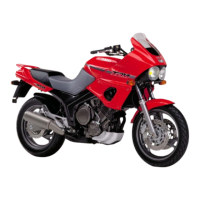
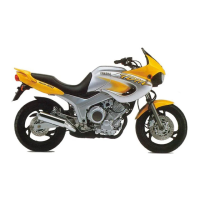
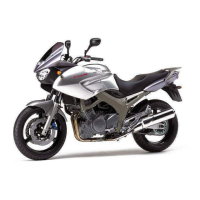
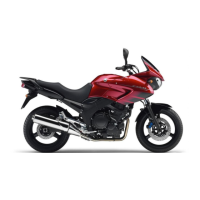
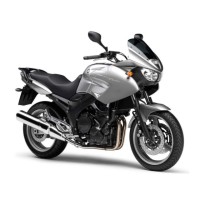
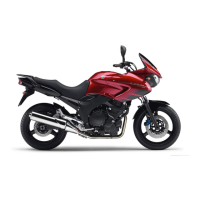
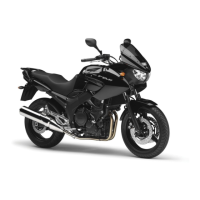
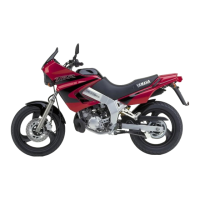
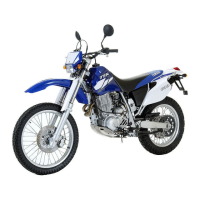

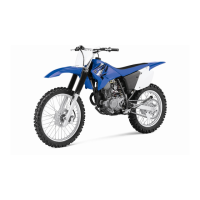

